
Trip to France, Spain and Portugal
Mike and Judy Henderson
September 1 to September 25, 2017
I'm going to leave the map on each page describing this trip so you have an idea of where we are.

9/7/2017 We arrived at La Rochelle this morning about 8am, in the port of La Pallice and docked very near the U-Boat Pens. But before I discuss the U-Boat Pens, let me review the tide situation on this coast and how some ports deal with it.
La Rochelle does not get the extreme tides that St. Malo gets, but can get tides of 20 feet on a regular basis (difference between water level at low tide and water level at high tide) and even higher tides on occasion. This could cause serious problems for ships at the ports, including having to monitor the lines used to tie the ship up and adjusting them as needed. In the late 19th century (I think the tour guide said 1890) La Rochelle decided to close off their port area and use a lock to enter the port. The port is kept at essentially "high tide". If a ship arrives (or departs) at high tide, the locks are open and the ship can just enter. But if a ship arrives (or departs) at any other tide, the ship must pass through an operating lock.
Here's a picture of the lock at La Rochelle that we had to pass to reach dock. The roadway bridge pivots to the side when a boat needs to transit the lock.

In 1940, during World War II, Germany overran France, and this gave them the opportunity to position U-Boats closer to their areas of operation, allowing the U-Boats to travel a shorter distance to their combat stations, which also meant less wear on the boats and crew. But this put the U-Boat bases within reach of the British bombers. Something had to be done to protect the U-Boats while in port for refitting and repairs.
In 1941, the Germans began construction of the U-Boat Pens at La Rochelle and they were in operation shortly after.
We docked very near the U-Boat Pens and I could take a good picture of the front of the pens.

But the Germans had a problem because of the lock entry to the port. A U-Boat "trapped" in a lock would be easy picking for an Allied aircraft. Just machine gun fire from the aircraft could puncture the pressure hull of the submarine and put it out of service for an extended time The Germans could limit U-Boat entry to times with the tide was high, and thus transit the lock rapidly, or they could provide a "protected lock". They eventually decided to build a protected lock. Here's a view of the back of that protected lock.
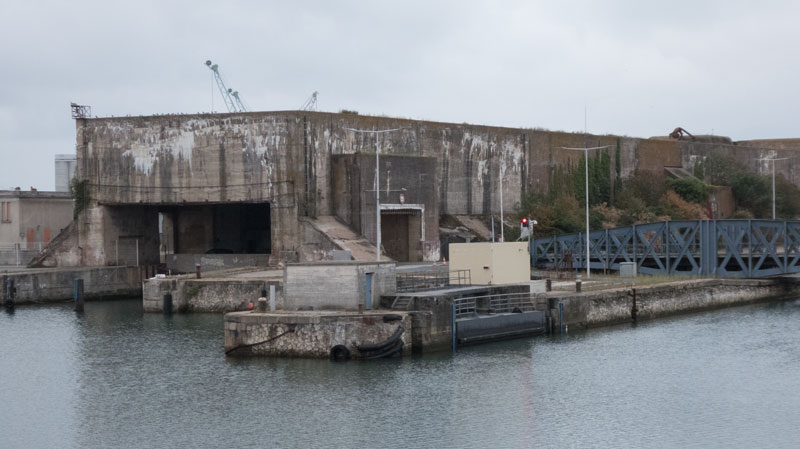
And the front - taken as we were leaving port.
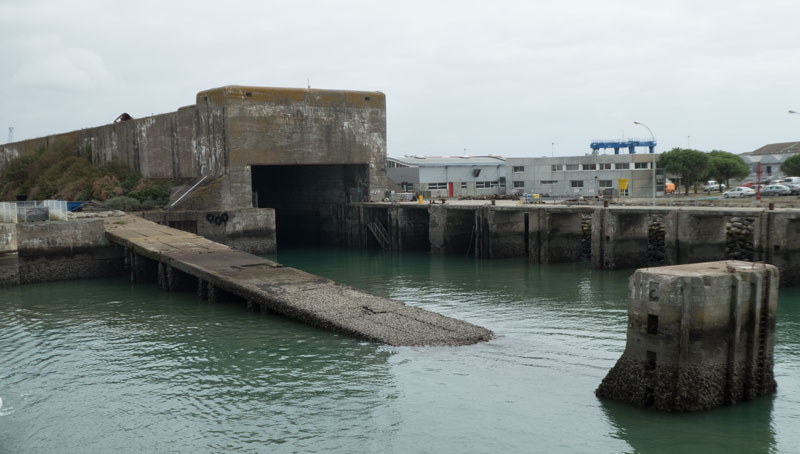
And here's an aerial view (picture taken from the web). I added the arrow to show approximately where we were docked. You can clearly see the protected lock used by the German U-Boats. It's of no use now because of the limited headroom and is permanently blocked. An interesting discussion of German U-Boat pens can be found here.
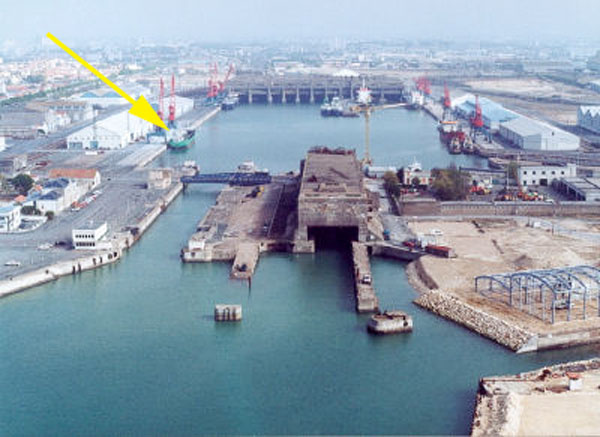
We took a tour of the center of La Rochelle. There's not a lot that's noteworthy there, but we walked the old town and saw the small boat port, some old houses, a church, and a farmer's market.
Here's one of the small boat harbors at low tide.
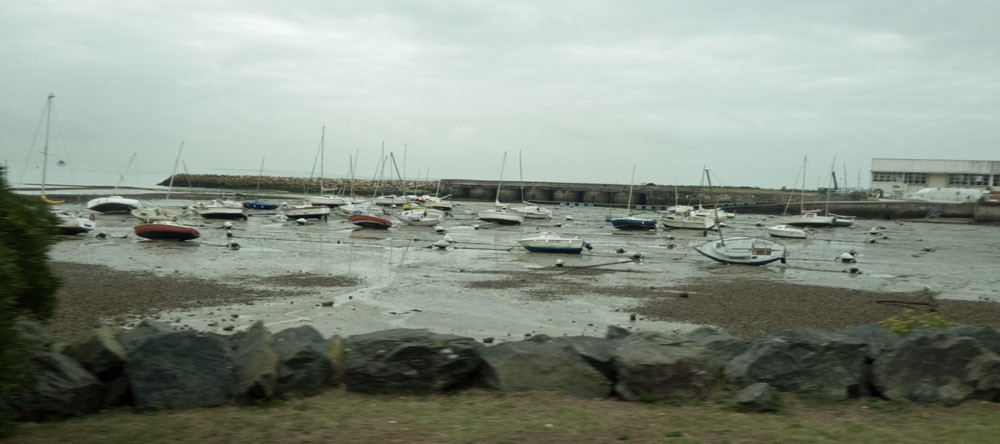
And a close-up of the boats. You could walk out to your boat!
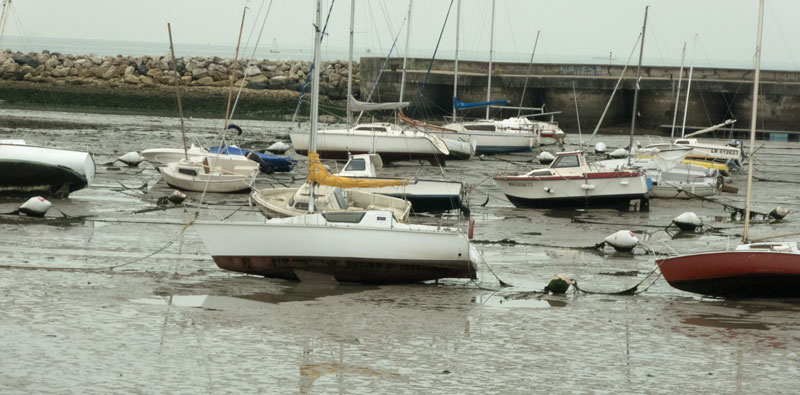
There wasn't much of interest to me in the tour of the city center - just the usual old buildings and a church. But at the end of the tour, we went to a "Farmer's Market".
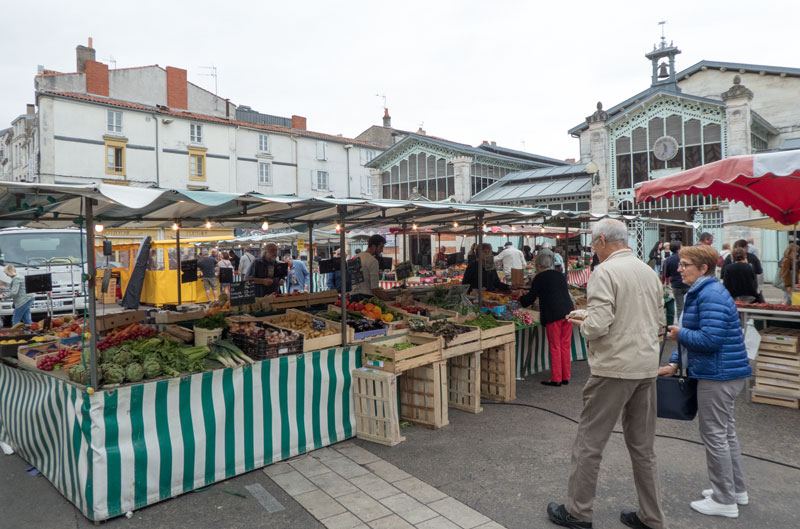
A really outstanding display of produce - all beautifully presented.

Inside there were more surprises. There were small "stalls" selling meat, cheese and sausage. I'm only showing one meat and one cheese stall here but there were many and each had their wares neatly arranged and beautifully presented. First the meat.
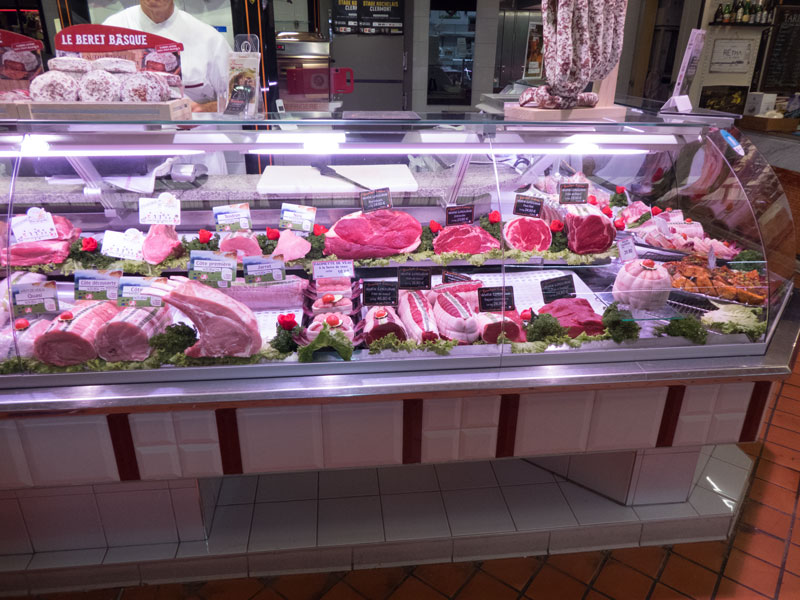
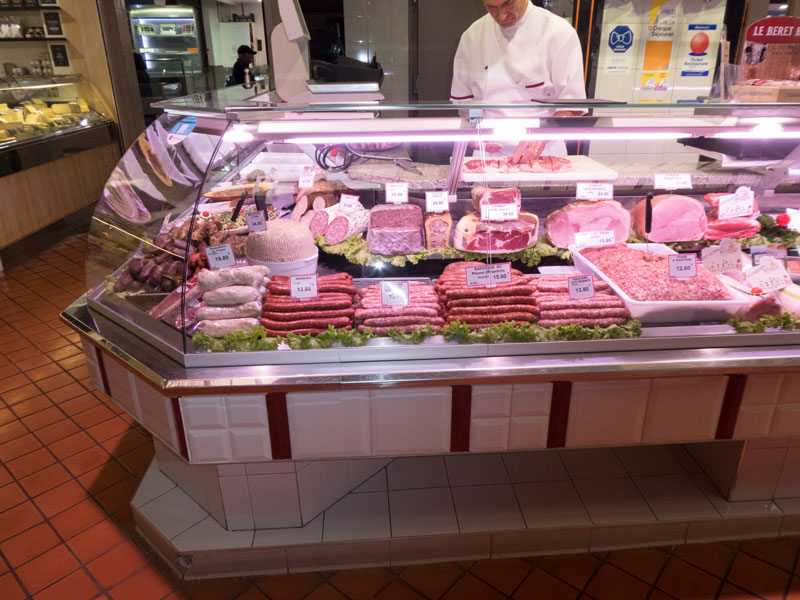
And then the cheese. Many, many different kinds of cheese.
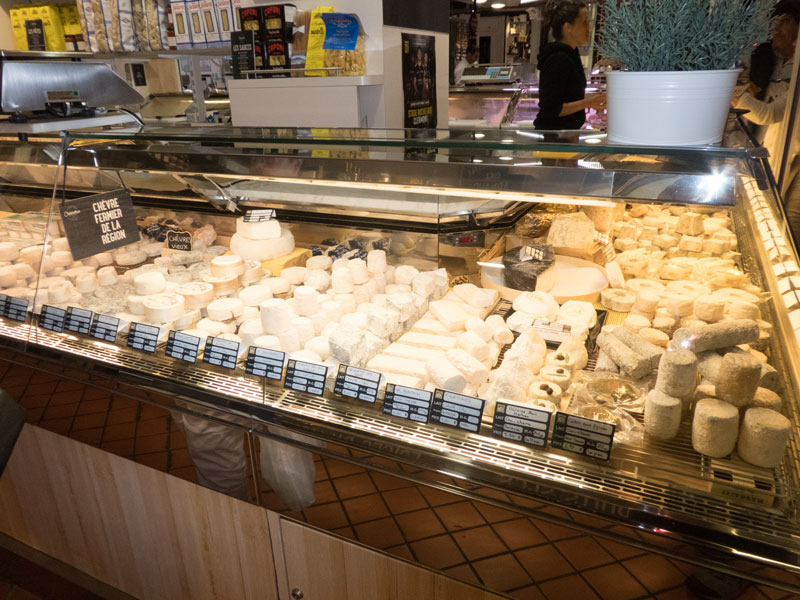
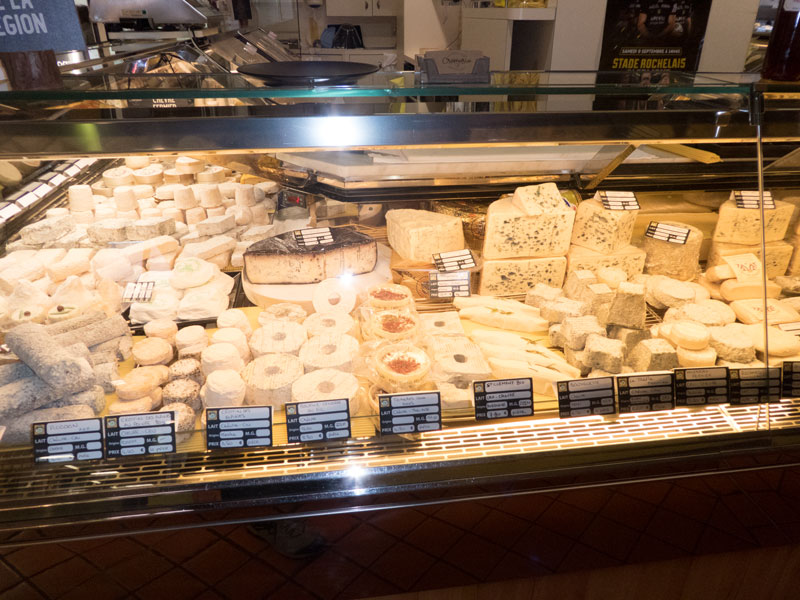
One cultural difference is demonstrated in these chickens displayed for sale - their head and legs are still attached and the feathers on the neck were left on the carcass. Certainly not something you'd see in the United States.

Then it was back to the boat and lunch. About 2pm we departed and, since it was low tide, had to transit the lock. Here's a view forward.
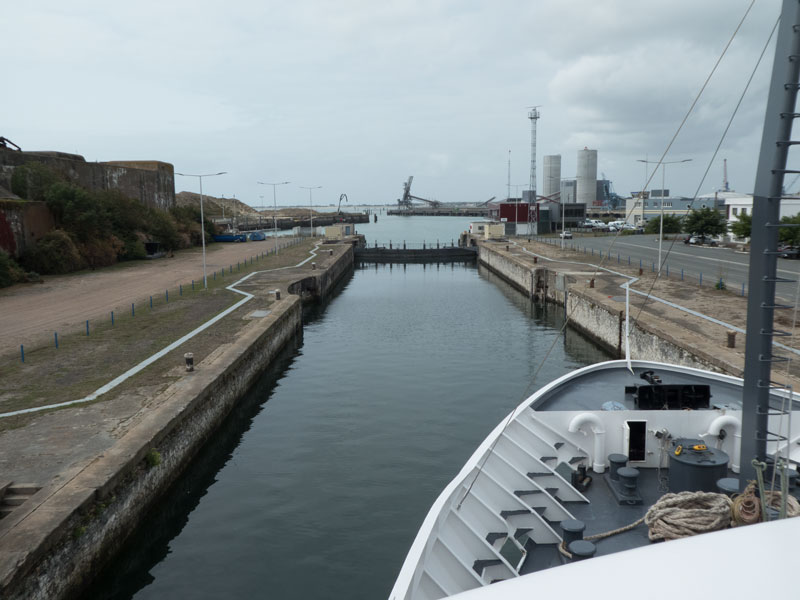
Once we were in and tied up, the gates at the rear began to close.
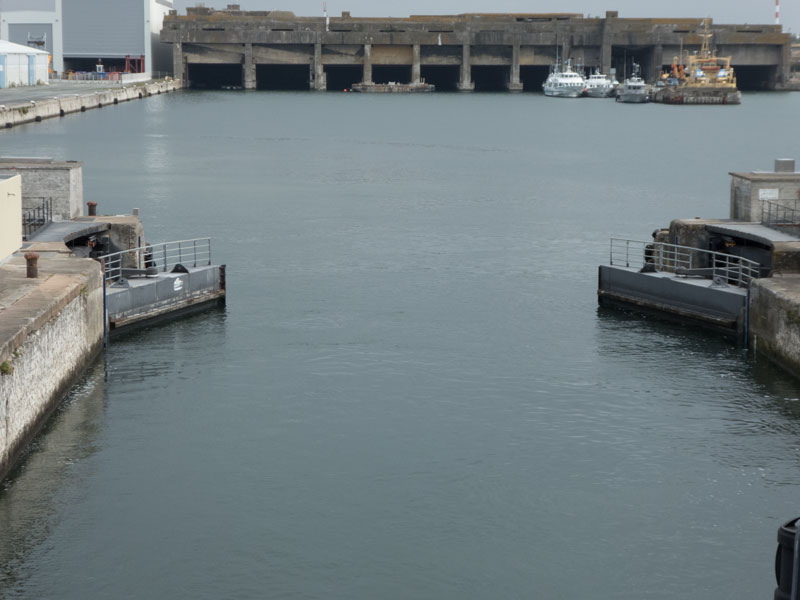
Once the rear gates were closed, they began to drain water out of the lock. You can see the wet area on the front gates where the water has started to recede.
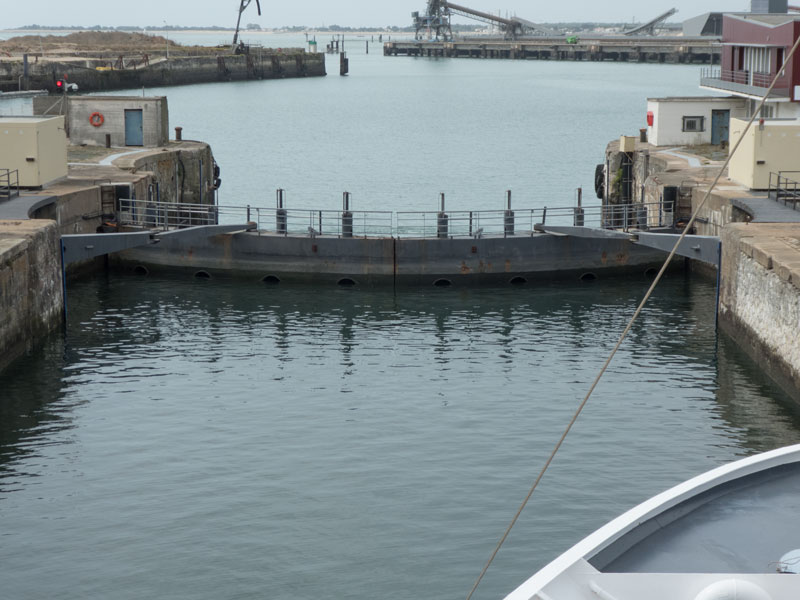
Eventually, the water in the lock equalized to the water level outside the lock and they began to open the forward gates. You can see the gates just opening.

When the gates were fully opened, we began to move out of the lock.
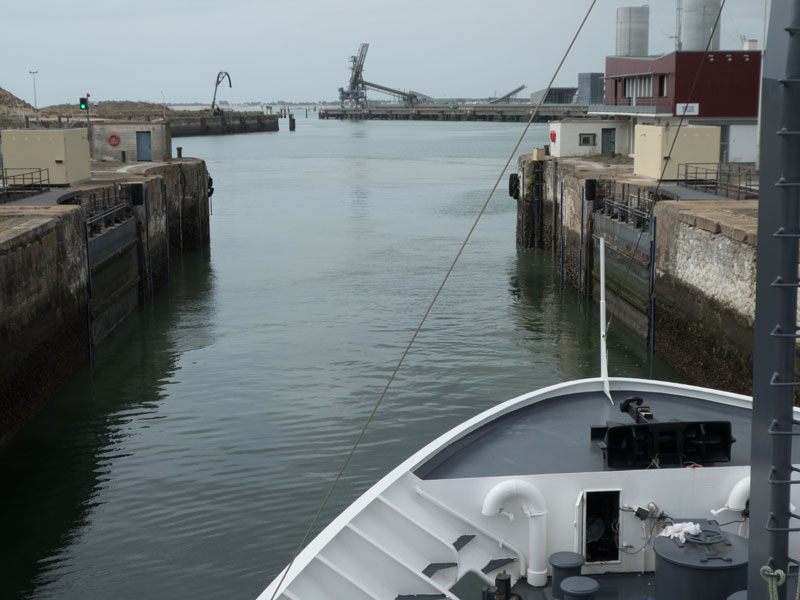
And then the port was behind us and we were heading to the open sea.
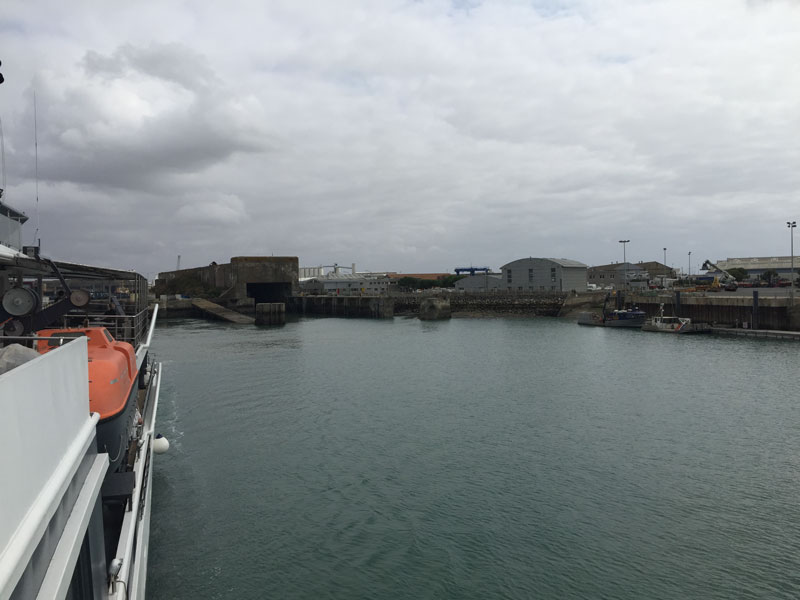
Every port requires that you use a pilot to enter and leave the port. But then the pilot has to get off the boat. Here's the sequence. The pilot boat approaches our boat.
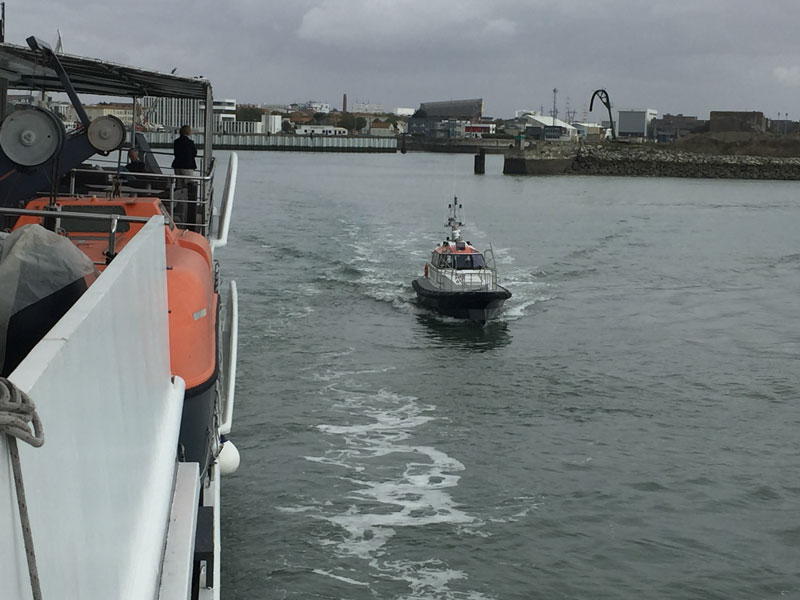
The pilot boat nudges up against our boat and holds its position against us. Note the rope ladder hanging from the side of our boat. The pilot or a crewmember (indicated with the arrow) is checking the situation out.
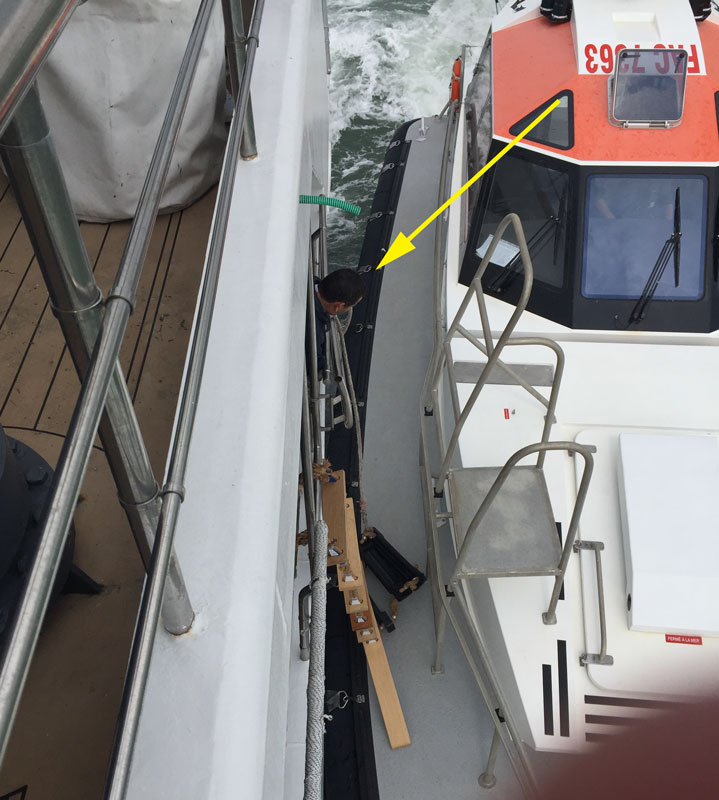
Then the pilot climbs down the ladder and transfers to the pilot boat.
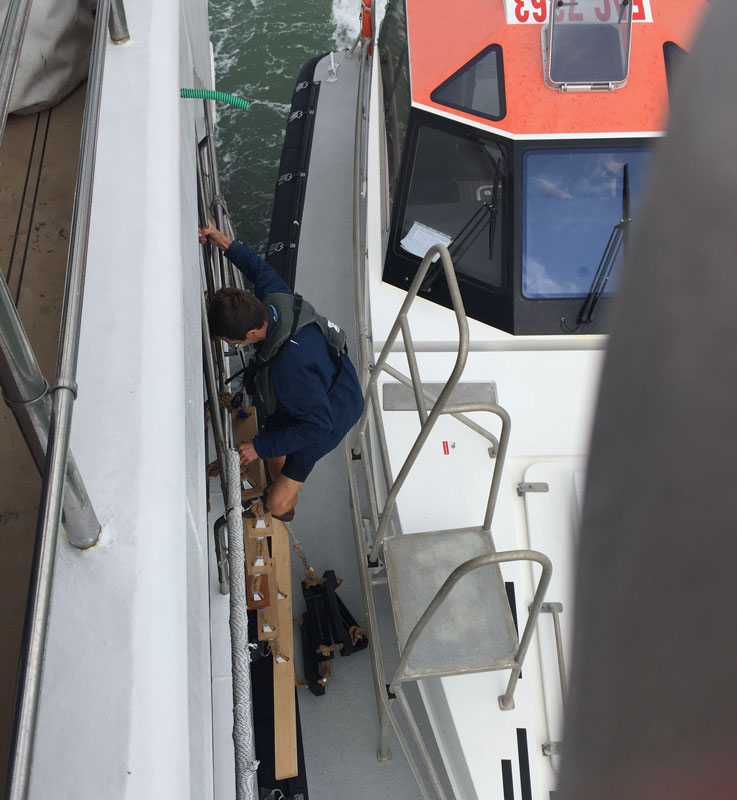
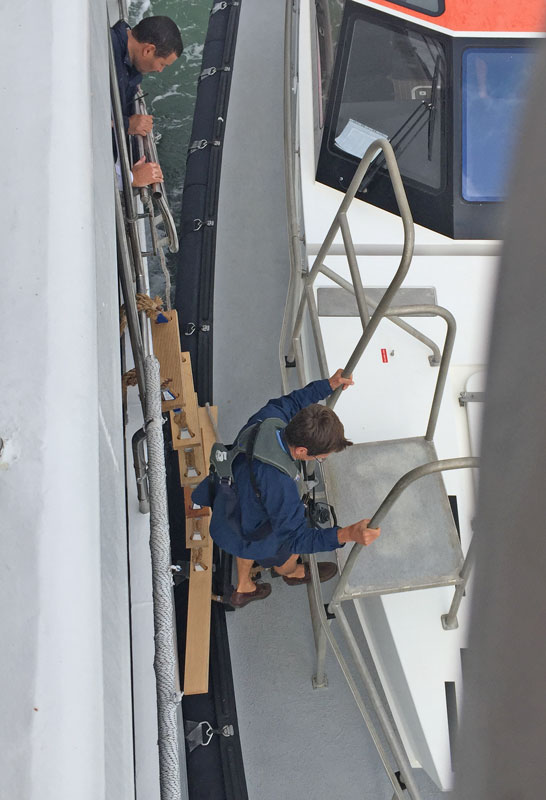
And the pilot boat pulls away from us and we're on our own.
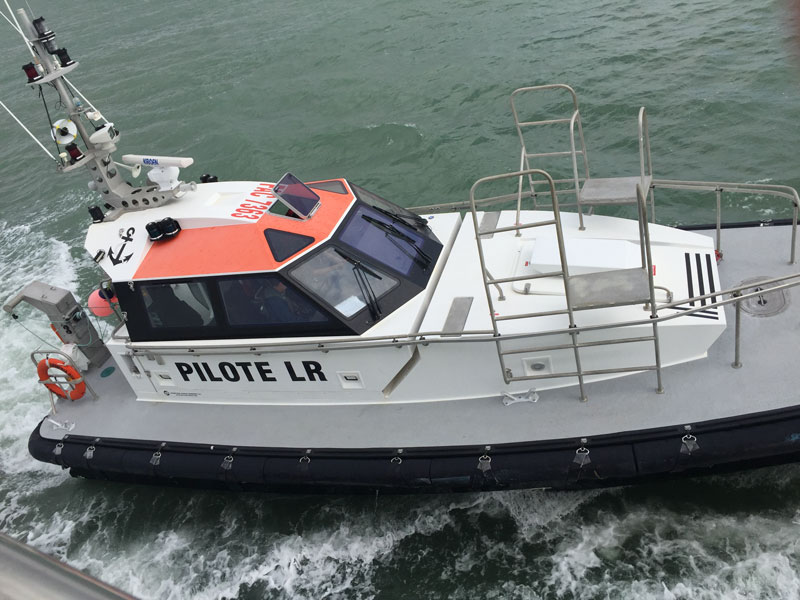
Our next stop is San Sebastian in Spain. The report is for much warmer weather.
Our Adventure continues here.